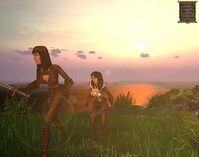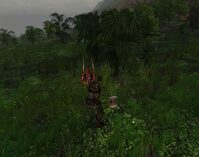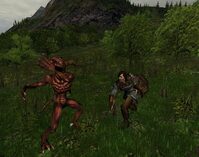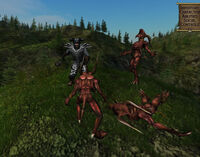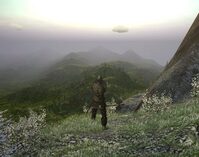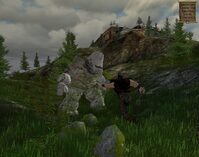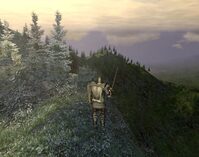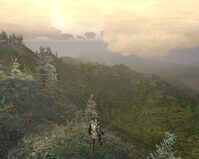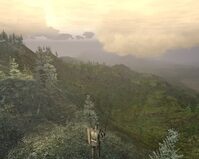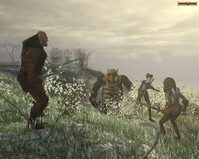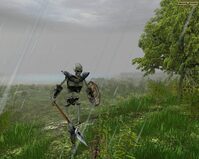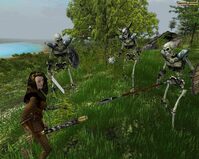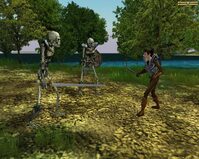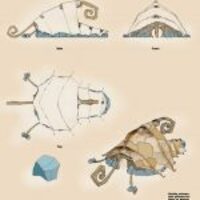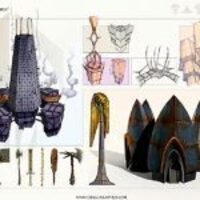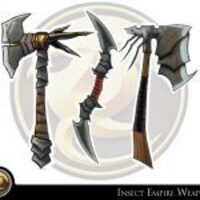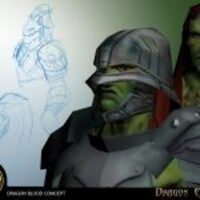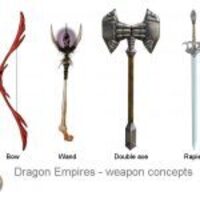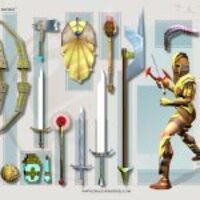The Rise and Fall of Dragon Empires
Before I begin I’ve got something to get off my chest. This article has been something I’ve worked on and off for a while now, and something that was on my list for even longer. Unfortunately this is nowhere near the quality I originally set out to achieve and for that I’m sorry to those that might be expecting more - I aim to do better in future!
Additional disclaimer! The font used in the banner is the closest thing I could find to the font used in Dragon Empires’ logo however it’s unfortunately not 1:1, but pretty damn close.
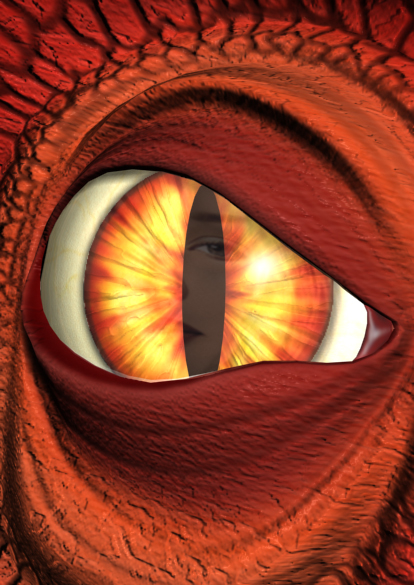
Dragon Empires was a game being developed by Codemasters (specifically their UK and then newly acquired USA studio), which was announced on the 20th of September 2001. Cancelled on the 3rd of September 2004.
Wait, Codemasters made MMOs? Well sort of, let’s go back a little bit here.
See in 1999, Codemasters aquired a game called The Realm Online (or just The Realm, as it was known at the time) which to my knowledge was their first step into the world of MMOs, though the title itself was originally developed by Sierra On-Line.
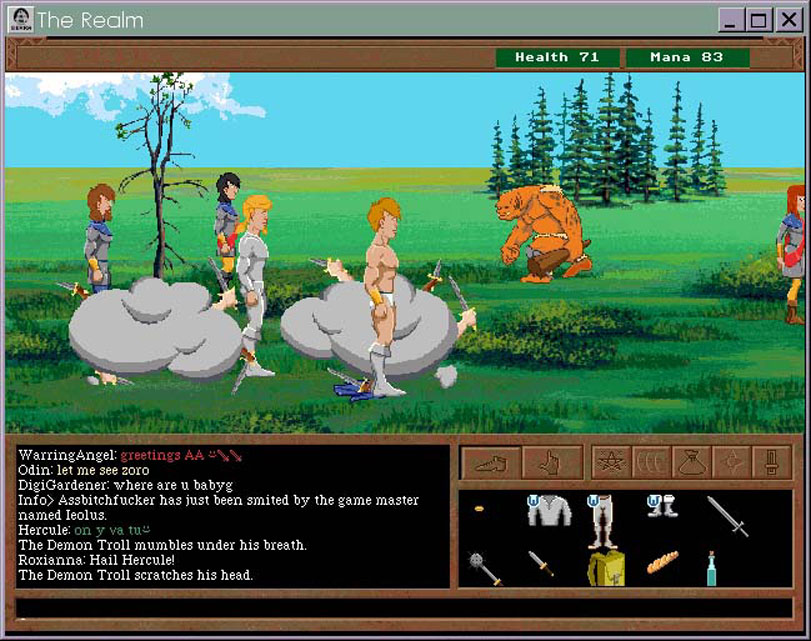 Much to my surprise, players still play The Realm Online even today.
Much to my surprise, players still play The Realm Online even today.
Now you’ll have to excuse me if I get the order of events here a little muddled, but the sources aren’t fantastic.
Prior to the acquisition of The Realm Online, Sierra had begun to focus its resources on a new MMO based on the Tolkien universe called Middle Earth Online, which was announced in 1998.
Unfortunately, in February 1999, Sierra began to lay off over 250 members of staff due to financial difficulties and on the 22nd of February, Yosemite Entertainment, which had originally developed The Realm, was shut down.
On the 17th of September of the same year, Codemasters announced it had acquired the studio housing that Yosemite Entertainment was originally based in and employed much of the original team - according to one source, this apparently included the acquisition of the Yosemite Entertainment name as well, however I could not see any evidence of Codemasters ever using it.
According to two sources, Codemasters didn’t acquire The Realm until the early 2000s, but on the official website for The Realm, we can actually see a press release from December 17th, 1999, which clearly indicates the acquisition had already happened prior to this time - so my current assumption is that the acquisition took place around the same time that Codemasters acquired Yosemite Entertainment, unfortunately I could not find a source to confirm this.
As also seen in the press release provided above, on December 17, 1999, Steve Nichols was brought back to work at Codemasters’ new studio to continue leading the development of The Realm. Nichols would later serve as the lead designer on Dragon Empires up until March 1st, 2002.
As Bruce Everiss explains on his blog, Dragon Empires started it’s life as a 3D upgrade to The Realm - which, according to Everiss, went wildly beyond the original scope before eventually evolving into its own game, Dragon Empires before ultimately being cancelled.
Following the cancellation of Dragon Empires, Codemasters went on to become the publisher of the MMO RF Online, before later developing and publishing the poorly received ArchLord alongside NHN Corporation—with ArchLord probably being the final nail in the coffin for Codemasters’ pursuit in establishing an MMO.
The rest, they say, is history! Or is it? Well, yeah, duh.
If you’re interested in a more in-depth coverage of all the events that occurred during the game’s development, I highly recommend checking out the Dragon Empires History Pages.
So, Dragon Empires!
Let’s move this more towards the game itself. What was it about? Where did it take place? What differentiated it to other MMOs of the time?
Steady on, we’ll get there!
 The Map of Fortitude (source)
The Map of Fortitude (source)
I’m not going to go into massive detail about the game here as there’s very little information out there that really gives us much detail besides lots of marketing nonsense.
Dragon Empires was to take place in the world of Fortitude, which was to feature 50 different cities across five empires, each ruled by its own distinct dragon—each empire was to be uniquely themed based on the influence of its particular dragon.
The empires in the game were as follows.
- The Empire of the Lady (based in the south east)
- The Yellowback Empire (based in the west)
- The Blackfly Empire (based in the east)
- The Greenwater Empire (based in the north east)
- The Redwing Empire (based in the north)
It’s difficult to discern how fleshed out the story was before the game was cancelled, with very little detail provided about the world besides the aforementioned empires.
The fantasy author Piers Anthony was selected in a poll by the community in March 2002 and brought on board to write elements of the story for the game.
As part of the lore, all the five empires were at war with one another, with the player intended to have some influence upon the separate tribes within each of the empires—which were all trying to gain territory.
Quite an exciting feature was the ability for players to form clans and then proceed to take over plots of territory. This supposedly included the ownership of entire cities which could be taxed by the clan of which other players could be residents - an incredibly ambitious feature for the time which I don’t believe has yet been done elsewhere.
A batch of screenshots released around E3 2002 showing a few of the environments, characters and enemies to be featured in the game.
Unsurprisingly, the game was to feature both PVE and PVP combat, which utilised a real-time combat system.
The PVP combat was supposedly intended to be an optional part of the game - however, different sources have placed different emphasis on the importance of the PVP aspect due to it being a requirement in order for players to take territory from one another, which was generally regarded as one of the major features of the game.
Some examples of concept art created for the game.
Confusingly, the Dragon Empires website appears to outline that PVP was intended to be optional, but then outlines it as an unavoidable aspect of the game? Which is a little puzzling.
As the hierarchy of territorial ownership between clans is a fundamental part of Dragon Empires, Player vs Player combat is an optional part of your rise to power. It matters not if you are the outlaw raiding travelling traders in the wilderness, or the bounty hunter that protects their welfare - you will eventually come into conflict with human opponents. Whether this transpires as a one on one duel, or an all-out war as rival clans clash, there are often far bigger prizes than a traveller’s purse of gold to be fought over. More is at stake than fame and fortune however. Be careful who you swear allegiance to, as your individual decisions can change the political map of the Dragon Empires.
Closed Beta
Unfortunately, nothing seems to remain of any closed beta, but comments still exist online that fortunately give us a rough idea of how things went.
During the game’s development, it seems there was at least one closed beta that I could confirm but it was very limited in scope at the time, and surprising to hear, it supported less than 800 players in the server at one time.
This appears to match with some claims that state the technology developed for the game did not scale well to the number of players required for an MMO, which was actually given as one of the reasons why the game was later cancelled.
Who was working on it?
It’s always a shame when games like this end up cancelled, though it’s also easy to forget all those that poured so many hours of their lives into developing them.
Unfortunately, tracking down credits for cancelled games is always tricky, but I’ve listed, in no particular order, those I could find below and what their roles were.
- Terry Robinson (Artist, and the designer of the logo)
- Gareth Morrison (Artist)
- Andrew Graham (Graphics Programmer)
- Sion Lenton (Associate Producer)
- Jon Attfield (Lead Server Programmer)
- Nicola Bhalerao (Programmer)
- Scott Cowie (Senior Level Designer)
- Toby Eglesfield (Principal Artist)
- Piers Anthony (Writer)
- Ted Carron (Producer)
- Stephen Nichols (Lead Designer)
The End
As you know already, the game didn’t come out, and it seems many factors played into this.
As mentioned at the start of this article, Bruce Everiss explained that Dragon Empires had gone well beyond the original scope that was intended. What should have been an upgrade to an existing game became a huge new world, with new technologies and difficulties that the team had to overcome.
Another source in the comments section on Bruce’s website, which can’t be confirmed, seems to explain that management issues played a big factor in the games woes with a lack of programmers and oversight over the project.
There were many things that went wrong on that project, but it suffered from a lack of attention by the directors and was understaffed on the code side for much of it’s development (and many of the staff there were badly demotivated). As someone who worked on the team I can tell you it would have made a good sitcom in how badly it was managed (similar to the Office).
“EricTheRed”, 10th of February 2010
The official reasons given for the cancellation of the game at the time were cited as both technical and budgetary.
[…] unexpected obstacles with the server code, in particular our ability to serve clients at a scale which would have [not] permitted us to launch the game as an MMO.
Gary Dunn, 6th of September 2004
Either way, the decision to end the development of the game was a sudden surprise to many in the community, and perhaps even to members of the development team as well, with news updates being rolled out even hours before the announcement of the game’s cancellation.
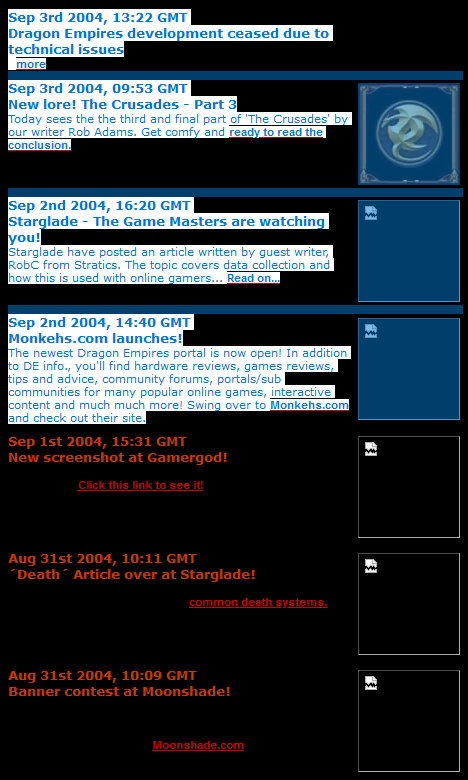 News updates continued all the way up to the cancellation of the game.
News updates continued all the way up to the cancellation of the game.
It didn’t take long until an online petition was launched to try and revive the game, however, unsurprisingly, the petition was unable to reverse Codemasters’ decision.
Despite the end of its development, Dragon Empires still seems to be fondly remembered by users in the community for it’s ambitious design


